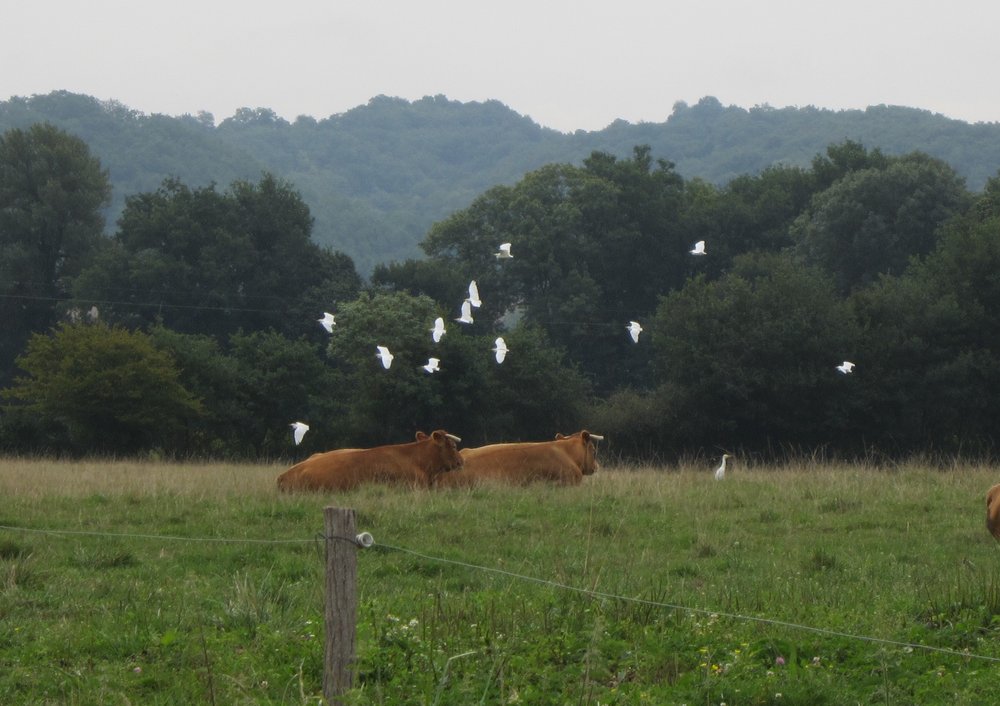 Francis Morlass arrives in the morning to check the trap he has set for the fox, which has killed a few of Odette’s chickens. The plan is to catch it in a have a heart trap and then shoot it. I’m on the side of the fox, of course. Not that I want it to take Odette’s chickens, but I want it to live, to thrive. So to rid me of my wild animal love Odette tells me stories of how destructive the fox can be. There was the time she came into the chicken coop and found all nineteen of her chickens dead. “A massacre,” she explains. I get it that tending to chickens every day would make me want to protect them, but more—they are worth something, as a meal for Odette.
Francis Morlass arrives in the morning to check the trap he has set for the fox, which has killed a few of Odette’s chickens. The plan is to catch it in a have a heart trap and then shoot it. I’m on the side of the fox, of course. Not that I want it to take Odette’s chickens, but I want it to live, to thrive. So to rid me of my wild animal love Odette tells me stories of how destructive the fox can be. There was the time she came into the chicken coop and found all nineteen of her chickens dead. “A massacre,” she explains. I get it that tending to chickens every day would make me want to protect them, but more—they are worth something, as a meal for Odette.
Almost every morning on my walk I see fox. They work the freshly cut fields of hay. I stood and watched one stalk and pounce, all four feet lifting off before it landed on its prey. But so far the chicken-stealing fox is not trappable. He’s sprung the trap twice but has not yet been taken. I’ll continue to quietly side with the fox and publicly hope that Odette’s chickens are safe. Both of these things can be true.
Francis is outdoors a lot and loves the natural world. He’s about an inch shorter than I am, but square, like he was built to move things around. He has a quick smile and like most Gascons, can stand and chat forever. Odette tells him I am looking for birds, and right away he says: we see birds here that we never saw before. He is not the first to say this to me, so I’m beginning to think there’s a real shift in the area. I ask if there is a reason for this. They both agree that it is because there’s less use of pesticides in the fields. Neither say anything about global warming.
 find the foxWhat is new is the cattle egret that I see accompanying the cows in the fields. Francis tells me that Damian shoots at the egrets (one explanation for why I find the birds here so skittish) to scare them off. But Francis likes them: they eat flies. He has a lot less flies since the egrets have arrived. The other new birds are the kingfisher, a bright blue, practically turquoise on the back. There’s the Hoopoe, he tells me. I look it up later and see a black and white bird with a long bill and a dramatic crest. I want to see one! And the oriole. As he tells me this, the bright yellow bird lands at the top of the fig tree in front of us. I point it out to them, and they both say, “yes, the oriole loves to eat figs.” So do I. So I walk over to the tree and take a fig to eat as I begin my morning walk.
find the foxWhat is new is the cattle egret that I see accompanying the cows in the fields. Francis tells me that Damian shoots at the egrets (one explanation for why I find the birds here so skittish) to scare them off. But Francis likes them: they eat flies. He has a lot less flies since the egrets have arrived. The other new birds are the kingfisher, a bright blue, practically turquoise on the back. There’s the Hoopoe, he tells me. I look it up later and see a black and white bird with a long bill and a dramatic crest. I want to see one! And the oriole. As he tells me this, the bright yellow bird lands at the top of the fig tree in front of us. I point it out to them, and they both say, “yes, the oriole loves to eat figs.” So do I. So I walk over to the tree and take a fig to eat as I begin my morning walk.

